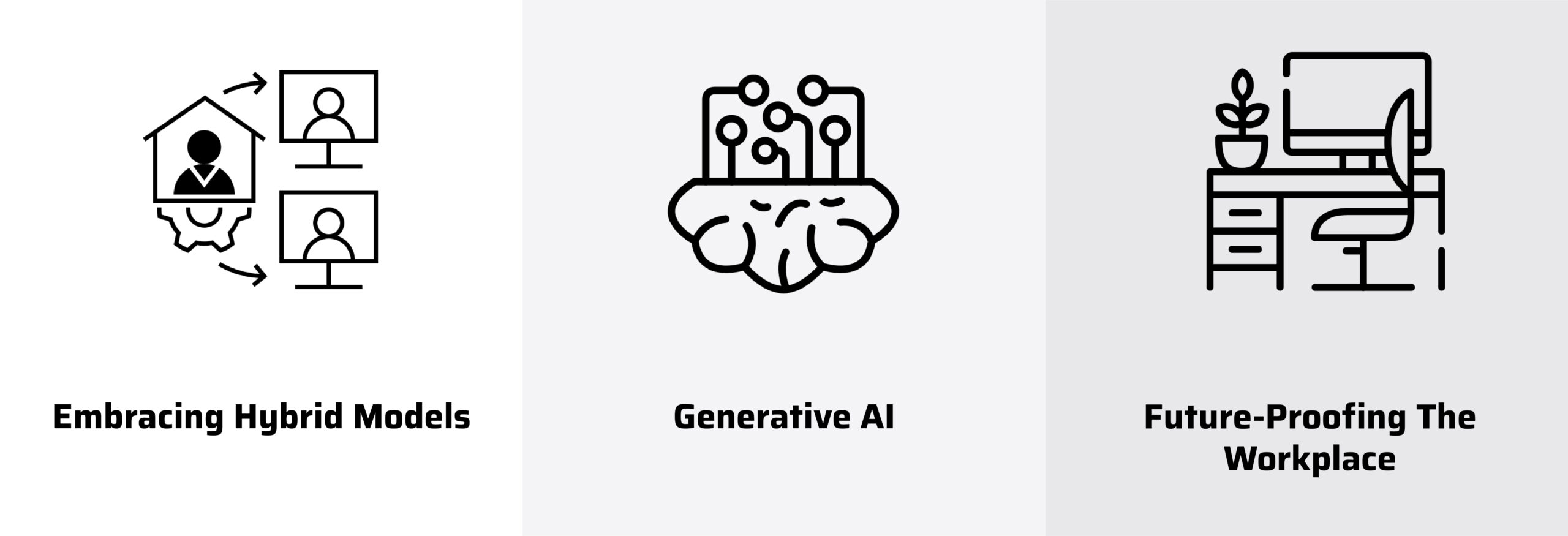Professional dynamics are constantly shifting, meaning the need to anticipate and adapt has never been more critical. Our latest article explores the three pivotal priorities shaping the professional landscape, from the embrace of hybrid models to the transformative power of generative AI. Discover the essence of future-proofing your workplace and stay ahead in the dynamic realm of work. Read on for a comprehensive insight into the leadership insights, future of work trends, and the strategic thinking required to thrive in the evolving professional landscape.
Embracing Hybrid Models: A Paradigm Shift in Work Dynamics
In the post-COVID professional landscape, embracing hybrid models emerges as a central focus. The conventional office-centric structure is transforming into a more flexible, adaptive model that seamlessly integrates both remote and in-person work. This paradigm shift ensures a harmonious blend where professionals can operate where they are most productive.
Expanding on this priority, organisations are increasingly recognising the significance of providing employees with the flexibility to choose their work environment. The emphasis is not only on accommodating diverse work styles but also on leveraging technology to foster collaboration and connectivity. Tools like video conferencing, project management software, and virtual collaboration platforms are becoming integral to maintaining a cohesive work culture despite physical distance.
As businesses navigate this shift, it becomes crucial to implement robust policies and technologies that support effective communication and collaboration in a hybrid setting. Moreover, fostering a culture of trust and accountability is essential to ensure that teams remain cohesive and engaged, regardless of their physical location.

The Impact of Generative AI: Reshaping Workflows and Possibilities
The advent of generative AI technologies like ChatGPT, Copilot, and AlphaCode represent a transformative force reshaping the professional landscape. The second critical priority revolves around comprehending and harnessing the impact of AI on workflows and possibilities. With generative AI expected to gain a ~30% share in the overall AI Market by 2025, integrating generative AI is pivotal for maintaining competitiveness in the evolving work environment.
Organisations need to invest in upskilling their workforce to navigate the integration of AI seamlessly. This involves providing training programs and resources to empower employees to work collaboratively with AI systems. Additionally, companies must carefully evaluate ethical considerations and ensure that the implementation of AI aligns with their values and principles.
As generative AI continues to evolve, staying informed about the latest advancements and possibilities is key. Embracing a culture of innovation and experimentation can help organisations stay at the forefront of technological developments, unlocking new avenues for efficiency and creativity.
Future-Proofing Your Workplace: A Strategic Imperative
With over 85% of organisations identifying increased adoption of new and frontier technologies as a trend most likely to drive transformation in their organisation, strategic thinking and long-term planning are vital components to ensure the resilience and sustainability of any professional environment. This encompasses not only embracing current trends but also anticipating and preparing for future shifts in the ever-changing work landscape.
To elaborate on this priority, organisations must foster a culture of adaptability and continuous learning. This involves encouraging employees to stay abreast of industry trends, acquire new skills, and embrace a mindset of lifelong learning. Creating a flexible organisational structure that can quickly adapt to technological advancements and market changes is essential for long-term success.
In conclusion, embracing hybrid models, understanding the impact of generative AI, and adopting a strategic approach to future-proofing are the three crucial priorities that define the future of work. Stay ahead by navigating these changes with foresight and adaptability.